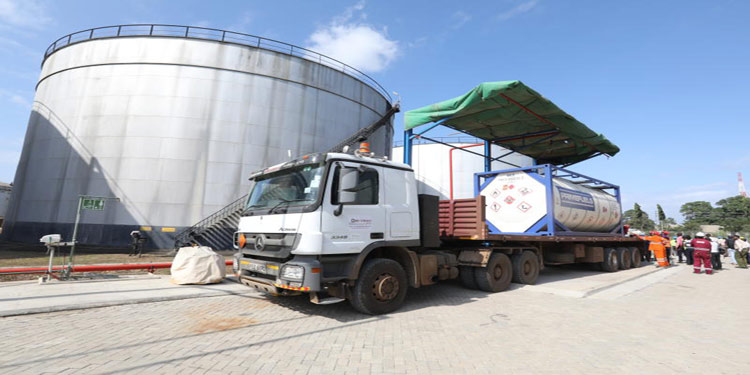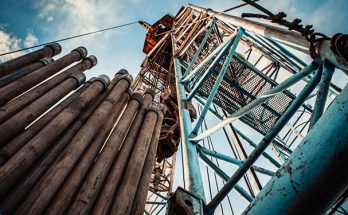
Kenya is expected to ship its first 200,000 barrels of crude oil in June, one year since President Uhuru Kenyatta flagged off the first trucks.
On June 3 last year, President Kenyatta flagged off four trucks with 156 barrels of Crude Oil from Lokichar in Turkana to Mombasa for storage at Kenya Oil Refineries Limited.
It was then announced that Kenya would only be able to ship the crude oil after hitting 200,000 barrels. It has taken a year for Tullow Oil to reach that target.
Petroleum CS John Munyes, said that they have anticipated to hit the 200,000 barrel mark in the month of June.
He aslo mentioned that Tullow Oil has transported 87,000 barrels of crude oil to the refineries storage tanks in Mombasa.
During the official opening of the 9th East African Petroleum Conference in Mombasa, Munyes said that Kenya is now poised to become a huge crude oil exporter.
“By June, we hope to hit the 200,000 barrels. We’ll then put them into a vessel, ready for shipment,” Munyes said.
However, Tullow Oil said initially they had licenses from the National Environment Management Authority and Energy Regulatory Authority that allowed them to only transport 600 barrels per day.
Speaking to the press on the sidelines of the ongoing three-day forum, Tullow EA executive vice president Mark MacFarlane said they have applied for new licenses that will allow them to transport 2,000 barrels daily.
“We received those licenses last week,” he said.
Tullow Oil, which has invested $2 billion in Kenya, said they are now certain that they will reach the 200,000 barrels required for shipment.
As per Munyes, a total of 94 wells of oil that have been drilled in Kenya, 63 exploration blocks that have been gazetted, 276 blocks licensed and 36 blocks that are open to investors.
He said the national government is setting up an 820km 20-inch diameter, South Lokichar – Lamu Crude Oil pipeline that will connect Turkana to Lamu Port. It is expected to be ready by 2022.
The line will decrease the amount of time spent on transportation of crude oil via trucks.
Other major petroleum infrastructures are the 450km, 20-inch diameter multi-product Line 5 from Mombasa to Nairobi which has been completed.
It is estimated to transport 1,800 cubic metres per hour.
Four tanks of 133,000 cubic metres have been made in Nairobi to ensure adequate storage of products coming through Line 5.
Another line of 122 km, 10-inch diameter multi-product line from Sinendet to Kisumu and completion of the Kisumu Oil Jetty will help Kenya become a force to reckon in the oil sector, the CS said.



